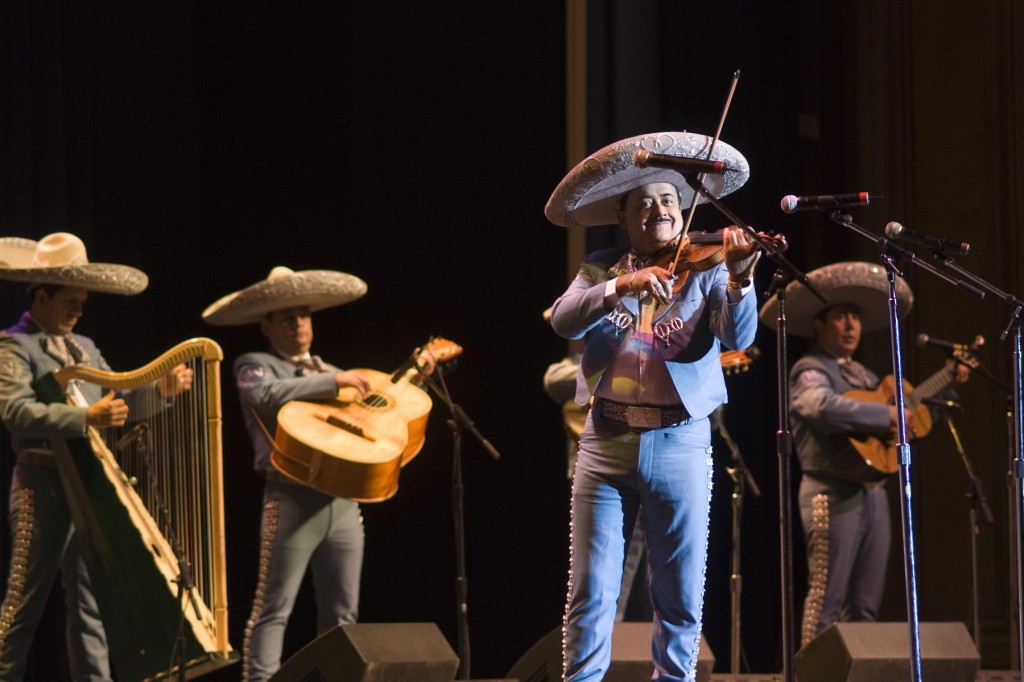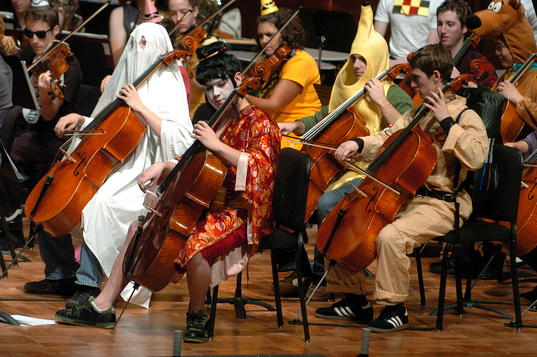I was waiting for this show for a long time and what a lovely evening it turned out to be!
First we were greeted with an excellent rendition of “El pastor” by the cute and gifted Sebastian de la Cruz, (all of eight years old!), who was selected to be the best in his category in 2009 Mariachi Vargas Extravaganza Competition. My goodness, his yoddling was so awesome! If at eight, he can sing so well, just imagine what wonders he will do in the musical world when he grows up! The winner of the best female voice in the competition, Karenn Lazo dazzled next! She was all grace and her voice was so powerful!
Sebastien and Karenn performing
Next came the much awaited mariachi band, all spectacular in their costumes and the extravaganza began! What powerful voices & what energy! What grace, what awesome stage presence! It was really something to be watching that! The songs kept coming one after the other and the strumming of the guitars, the exceptional violin playing, the awesome trumpets, the joking, the dancing and the most beautiful combination of voices- it was just mindblowing!
I was so happy and grinning from ear to ear the whole time as the music was simply superb. There was so much of variety and so much going on. What clarity in their voices! The energy and enthusiasm was so infectious- the band played non-stop for almost two and a half hours and it was a big party!
Some of my favorites in the show were “POR AMOR” (POR AMOR– watch this!),Vaqueros, hermoso cariño, Cielito Lindo Son Juasteco and this one- Por ti volare (you really must must see this!).
I was amazed at the multi-tasking of the members. One would come sing (do a lil jig too), and then go play the guitar or the violin and be a part of the chorus! My god- what stamina they must have! It was really a treat to watch them and at the end of the show, the performance had moved me to tears as the music touched me so deeply. I LOVE them!

The audience was amazing, singing along to most of the songs. In fact, many knew almost all the songs and the band gave a chance to a gentleman in the audience who did a great job (with José ‘Pepe’ Martinez jokingly trying to get the mike away as the singer sang the whole song!)
I was really very very happy after the show, one of the best I have ever seen in the Hill auditorium. This performance of Mariachi Vargas ranks really high in my all-time favorites! I hope I can watch another live performance of them sometime as this is definitely my kind of music! 🙂



